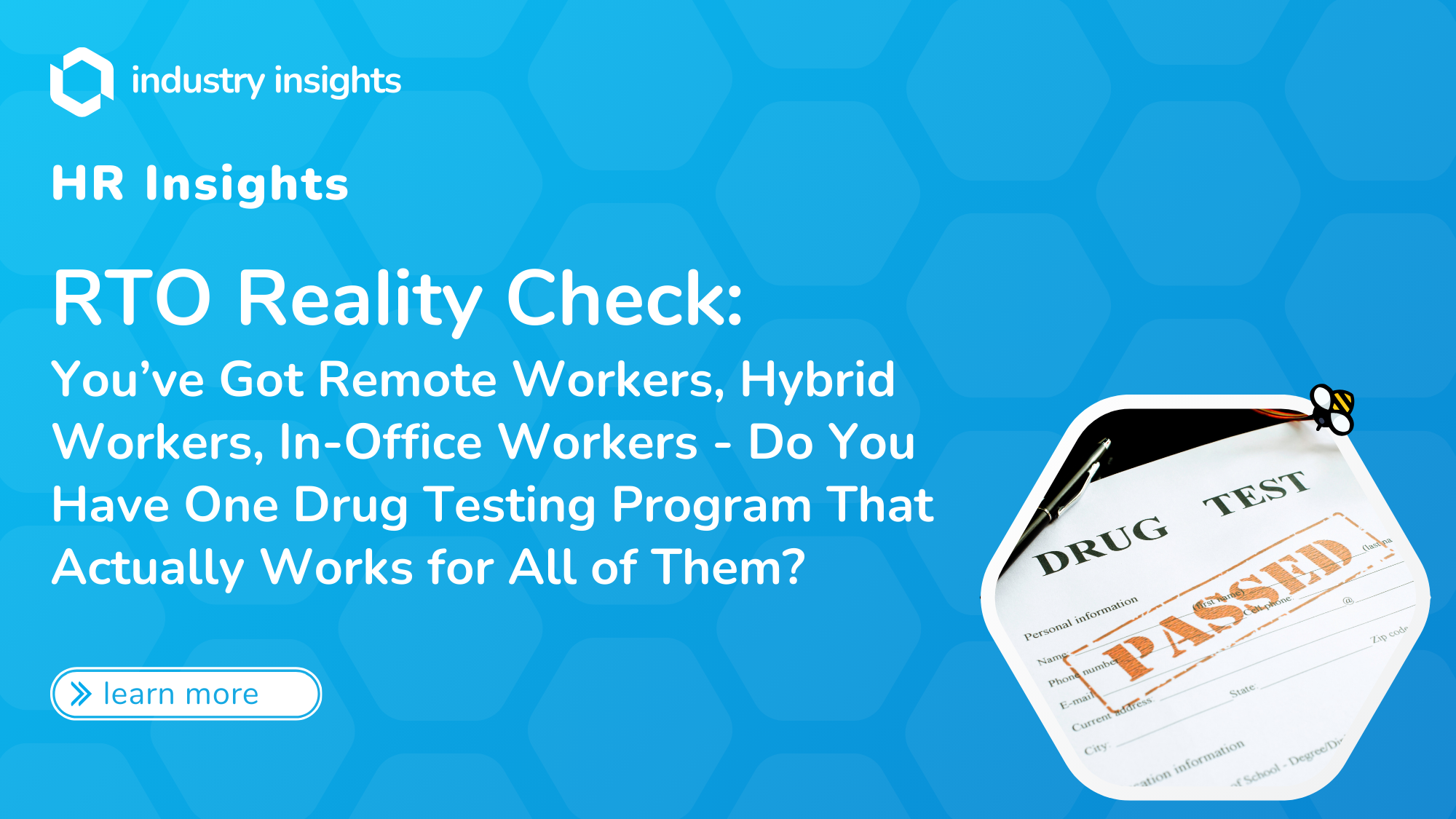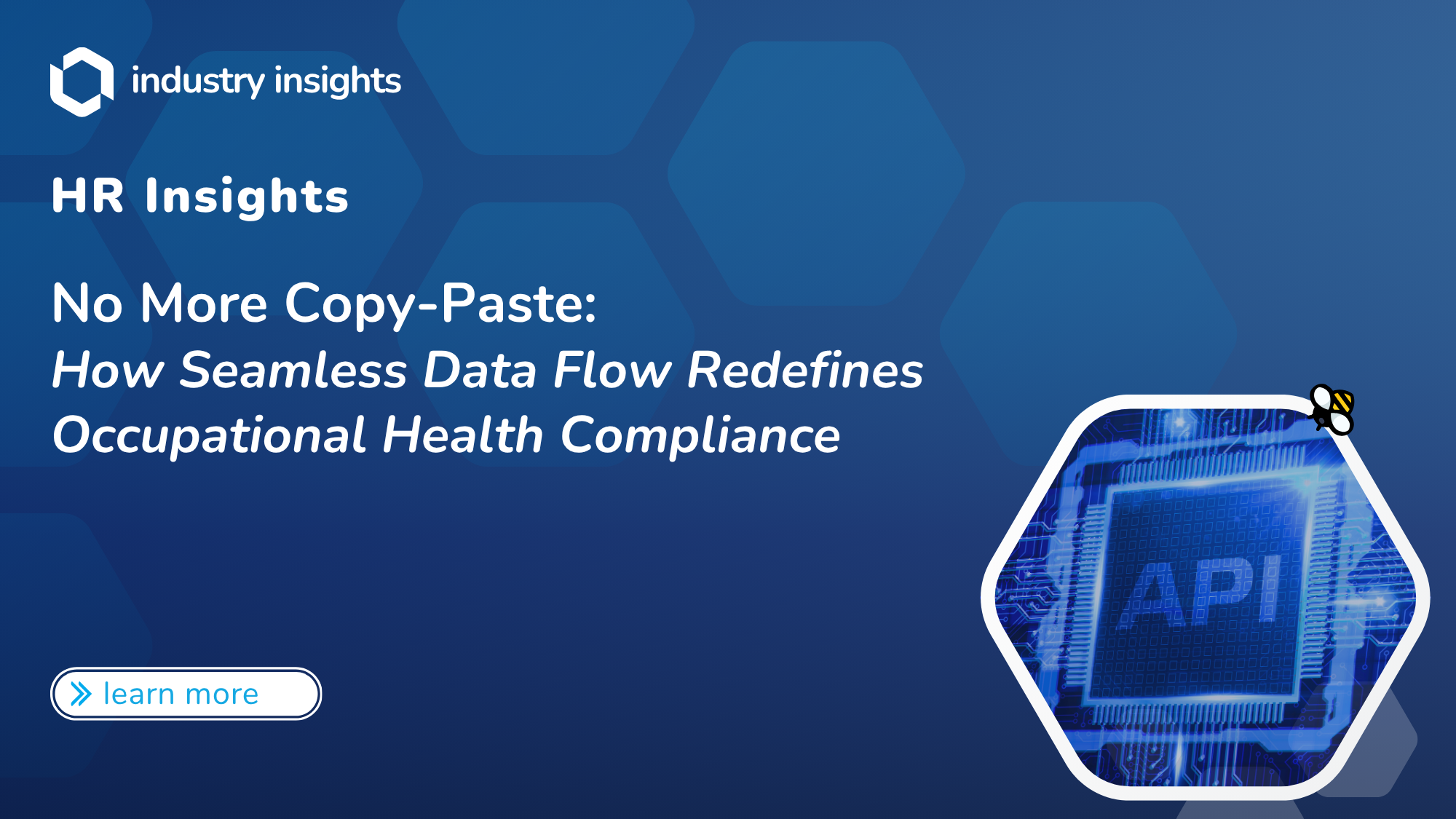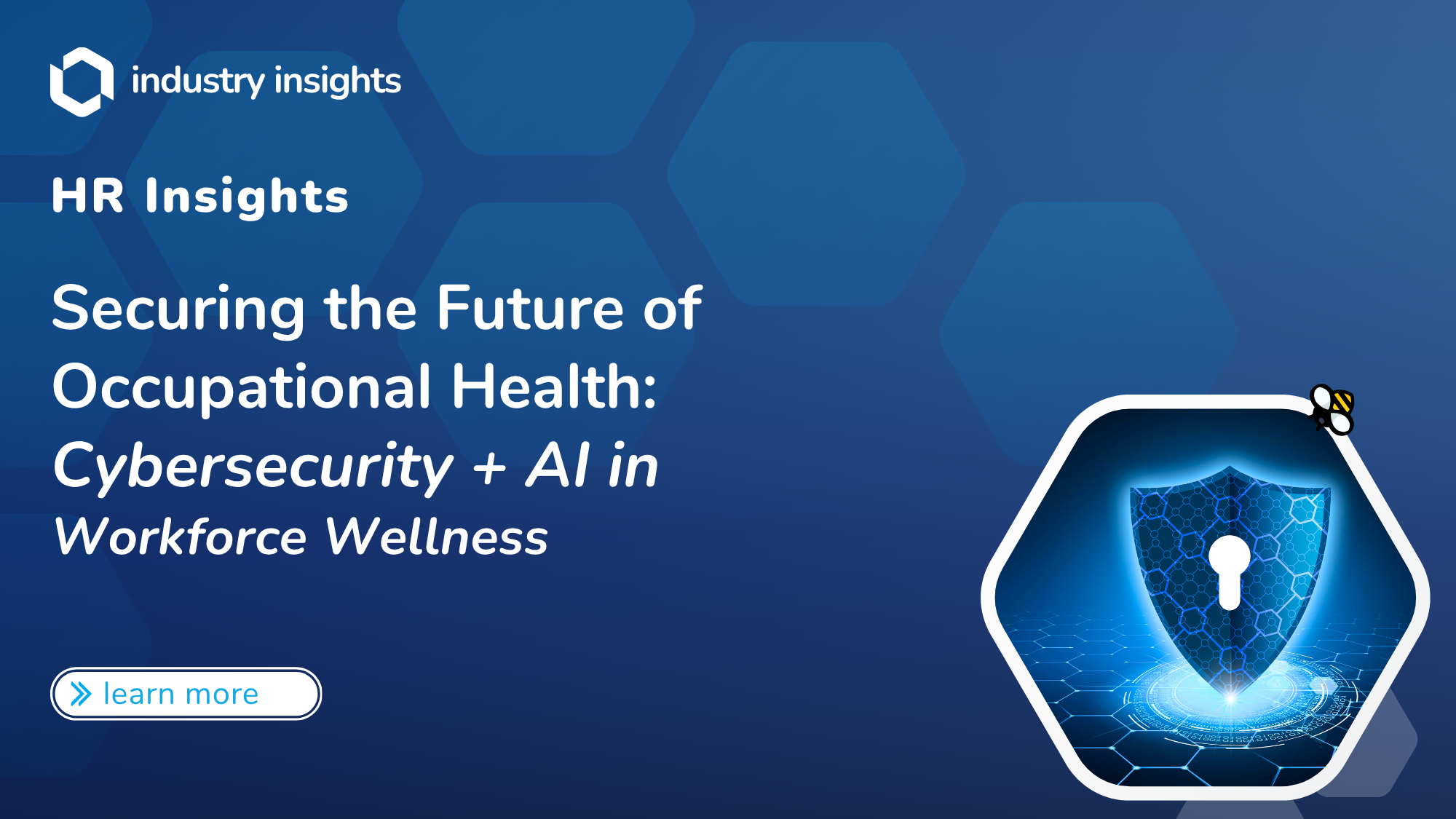The Post-Pandemic Patchwork
Over the past five years, employers have adopted a range of workplace models, including fully remote teams, hybrid setups, and traditional in-office roles. According to Forbes, one in five workers is now working remotely, with 16% of companies now operating fully remote (Haan, 2023). Where once there was a standard onboarding process for new hires, and ongoing compliance efforts followed a specific schedule, HR teams are facing more and more challenges to ensure that their workforce remains safe and compliant.
A process that once felt almost automatic is now the bane of the HR professional’s existence… Does your new hire in Kansas have access to a collection site? Is your hybrid employee in Chicago clear on the random testing policy, and does it line up with state and industry guidelines? Is same-day testing available to members of your on-site warehouse team following an accident?
Inconsistent drug testing practices can lead to compliance gaps, delayed hiring, employee frustration, and even legal issues. The U.S. Department of Transportation (DOT), for instance, requires strict adherence to testing procedures across all modes of transportation employment, regardless of location or work style (DOT, 2023). In addition to federal requirements, your team also needs to navigate a patchwork of state laws that can vary wildly on medical marijuana, remote collection options, and privacy concerns – not to mention that they can change with very little notice.
With the shift in workplace models, employers need to modernize how they monitor workplace safety and compliance. A robust drug testing program should do more than “cover the basics.” Your HR team should be able to utilize a system that can scale and flex to work for recruiting remote talent, as well as managing on-site employees.
The real question is not whether you have a drug testing policy, it’s whether you have one that works for everyone.
Why a One-Size-Fits-All Drug Testing Policy Fails in a Hybrid World
The rise of remote work has made flexibility a top priority for employees, but it’s also made consistency a growing challenge for HR teams. Traditional drug screening models relied on location-based testing sites where employees could present for in-person screening as necessary. This system quickly breaks down when your new hire lives two states away, your sales team is fully remote, or your staff works rotating shifts. Here are a few ways that a rigid, location-based drug testing policy can quietly derail your operations:
Limited Site Access = Delayed Hires
Remote employees can face long drive times – or worse, no access at all – to collection sites. Some employers have had to delay onboarding for days or even weeks simply because a candidate couldn’t complete a drug screen in their area. That’s not just an inconvenience; that’s a hiring bottleneck.
Policy Confusion = Compliance Gaps
One of the key points of maintaining a compliant workforce is ensuring that you and your team stay up-to-date on the latest federal, state, and industry requirements and that your policies are updated in a timely manner. Doing so will help set employee expectations regarding requirements and mitigate any potential repercussions due to inconsistent practices.
Slow Turnaround = Lost Talent
A top candidate gets another offer while waiting for their test results, or worse, your team misses the window to complete a random or post-accident test because the nearest site closes at 4 p.m. In today’s quickly evolving labor market, speed is not a luxury, it’s a necessity; and if your drug testing strategy can’t keep pace, your competitors will.
Legal and Regulatory Risk = Mounting Stress
Certain industries have strict federal or state mandates when it comes to testing – especially when it comes to the transportation, healthcare, and construction sectors. Failure to apply policies uniformly across employee categories could put your compliance at risk, especially in regards to the DOT, which requires employers to treat all safety-related employees equally, regardless of whether they work in-office or remotely (DOT, 2023).
Bottom Line
When your HR team attempts to stretch a blanket policy across multiple work styles, employees are often overlooked – or worse, your employer is exposed to risk. Your job is to ensure that you implement a screening program that meets the employees where they are, not one that assumes they’re all in the same place.
Core Requirements for a Modern Drug Testing Program
A modern drug testing strategy is not about checking boxes to meet the bare minimum requirements to remain compliant. Instead, it’s about making testing accessible, consistent, and stress-free, no matter where your employees report for work. Whether your team is on-site, operating on remote job sites, or working from their living room – the fundamentals of an effective program remain the same.
Accessibility
Can every employee or candidate complete a drug test without jumping through hoops?
Today, “local” may refer to rural Idaho, downtown Detroit, or a city on the Texas-Mexico border. Your testing program needs to include a nationwide network of collection sites, flexible appointment scheduling, and/or mobile and on-site collection options for remote teams, high-volume hiring, or post-incident testing.
Flexibility
Does your testing policy cover the wide range of scenarios that you and your team might encounter? Different roles, industries, and regulatory bodies may require pre-employment testing, random testing, post-accident testing, reasonable suspicion testing, and return-to-duty testing. Whatever platform you implement should be able to handle all of these use cases, without creating separate workflows for different employee work models.
Compliance
Are you confident that your program is aligned with all applicable laws? While organizations used to only worry about federal and their home state’s regulations, the implementation of remote workforces have caused the regulatory landscape to become much more complicated. Many states have their own rules on medical/recreational marijuana use, notification and consent requirements, limitations on when testing can be conducted, and specific rules for public vs. private employers.
The best programs are built to evolve, with compliance baked into the workflow, not duct-taped on after the fact.
Speed
How quickly can you move from scheduling a test to receiving the testing results? In a competitive hiring market, testing delays can easily be the difference between a new hire and a lost opportunity. Whatever drug testing solution your team implements should include real-time scheduling and status updates, Electronic Chain of Custody forms to eliminate paperwork delays, and fast lab processing times with automated results delivery.
The Modern Testing Program Isn’t Optional – It’s Expected
In the information age, we have grown used to being able to get results in seconds – be it an internet search, website loading speeds, or getting in touch with someone. This standard has extended to the job market, and potential new hires (and employers) expect to receive status updates from the drug screening process just like they do from their package deliveries. This puts additional strain on you and your HR team, and you need to implement tools that allow you to work smarter, not harder.
If your drug testing program cannot meet the four standards above, it’s time to rethink the model, not the workforce.
Conclusion
The world of drug screening is changing, especially when it comes to the variety of employee work models. No matter whether your new hires or employees are working in-office, on the job site, completely remote, or anything in-between; your team must ensure that you have a structured testing program in place that will allow you to meet regulations so that you are compliant with federal, state, and industry requirements, that is accessible to employees – no matter their location, and provides fast scheduling and results processing so that hiring delays are avoided.
In our next whitepaper, we’ll take a look at some of the common pitfalls that HR teams can fill into, how to build a unified drug testing strategy, how BlueHive can help simplify your testing process (our platform was built with this exact reality in mind!), and how you can ultimately have compliance – without the chaos!
Download the Whitepaper:
Sources
- Haan, Katherine. (2023, June 12). Top Remote Work Statistics and Trends. Forbes Advisor. https://www.forbes.com/advisor/business/remote-work-statistics/
- U.S. Department of Transportation. (2023). Employee handbook: What employees need to know about DOT drug & alcohol testing. https://www.transportation.gov/odapc/employee




